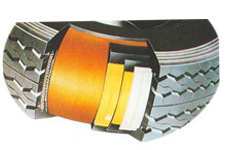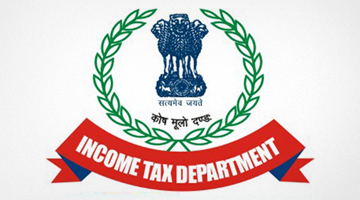CX - Valuation - goods cleared at factory gate and for captive consumption in another factory not same - not comparable; Demand - limitation - no mala fide intentions - and revenue neutral - demand beyond normal period and penalty set aside: Supreme Court
By TIOL News Service
 |
NEW DELHI, MAY 07, 2015: THE appellant manufactures Tyre Cord Yarn (TCY) and Tyre Cord Fabric (TCB) falling under Chapter 54 and 59 of the Central Excise Tariff Act respectively. The dispute has arisen in respect of the valuation of the TCY which are removed for captive consumption and to be used at Tarapur factory of the appellant. The appellant has been filing the price list proforma under Section 4(1) of the Central Excise Act, 1944, declaring the wholesale price of TCY for such goods by showing the same price at which the goods are sold by the appellant at the factory gate to the third parties. The price declaration so made was not accepted by the Superintendent of Central Excise as according to him, the price could not be declared at the same rate at which the goods are sold by the appellant at the factory gate to others. According to him, there was a difference between the goods which were cleared at the factory gate to be sold to the third parties and removed for captive consumption by the appellant itself for its Tarapur factory. This resulted in the appointment of a cost accountant by the Commissioner to go into this issue.
The cost accountant had given some report in which he had opined that the two goods are different from each other and therefore, price declaration which was filed by the appellant in terms of Section 4(2) of the Act read with Rule 6(b)(i) of Central Excise Valuation Rules, 1975 was incorrect. This led to the issuance of two show cause notices to the appellant. First show cause notice is dated 25.02.2000 covering period from August, 1999 to January, 2000. In this show cause notice, amount of Rs.78 ,20,365 /- for the aforesaid period was demanded as differential duty under Rule 6(b)(ii) of the aforesaid Rules. The second show cause notice was issued on 03.03.2001 which was for the period from February, 1996, to June, 2000. Both these notices resulted in confirmation of the demands mentioned in the show cause notices as well as imposition of penalties upon the appellant. The appellant filed appeal against the orders passed by the Commissioner. However, the Customs, Excise and Service Tax Appellate Tribunal ('CESTAT') has dismissed this appeal by the common judgment dated 01.10.2004.
It is against this judgment, present appeal is before the Supreme Court.
After going through the material on record as well as the orders of the Commissioner and the CESTAT, Supreme Court found that findings of facts are recorded by the authorities below that the two kinds of goods were not comparable with each other and therefore, the goods which were removed for captive consumption to be used by Tarapur Factory were to be valued under Rule 6(b)(ii) of the Rules and the price declaration given by the appellant applying Rule 6(b)(i) of the said rules was erroneous. Supreme Court also found that the appellant had even admitted some variations in the two types of goods in its reply to the show cause notices itself. In these circumstances, the Supreme Court held that insofar as the opinion of the authorities with regard to different nature of the goods is concerned, that does not call for any interference by this court.
Then the Counsel for the appellant pressed the issue of limitation. His submission is that the second show cause notice dated 03.03.2001 covered the period from February, 1996 to June, 2000, and most of this period would be time barred if extended period of limitation is not invoked in the present case. His argument is that there was no mala fide on the part of the appellant and no intention to evade the duty. In order to buttress this submission, the senior counsel has pointed out the following aspects in his favour : -
(i) The products sold at the factory gate and the products transferred to Tarapur factory were using identical raw materials and identical process. For this reason, the appellant believed that the products were comparable goods in terms of Rule 6(b)(i).
(ii) Both the goods fall under the same sub-heading of the tariff entry as both are admittedly TCY.
(iii) The price list which was filed by the appellant in the year 1994, and thereafter repeatedly, was accepted by the Central Excise Department after scrutiny and this gave a reasonable impression in the mind of the appellant that the price declarations filed by the appellant was correct.
(iv) The appellant could not have taken any undue advantage, in any case, by filing declaration under Rule 6(b)(i) instead of Rule 6(b)(ii) inasmuch as even if there was higher duty payable in terms of declaration under Rule 6(b)(ii) of the Rules, the appellant was entitled to take credit thereof in its entirety. Therefore, the entire exercise was revenue neutral.
(v) that as soon as the second show cause notice was issued and the Revenue wanted the appellant to file price declaration under Rule 6(b)(ii) the appellant complied therewith and with effect from 01.04.2000, i.e., immediately after the issuance of the show cause notice dated 25.02.2000, it is paying duty accordingly and taking credit thereof, as well. This is so accepted by the Department in the second show cause notice dated 3.3.2001 itself.
The Supreme Court accepted the submission of the appellant that there could not have been any mala fides on the part of the appellant in filing the declaration under Rule 6(b)(i) in order to evade the excise duty.
The question is about the intention, namely, whether it was done with bona fide belief or there was some mala fide intentions in doing so. It is stated at the cost of repetition that when the entire exercise was revenue neutral, the appellant could not have achieved any purpose to evade the duty.
Therefore, it was not permissible for the respondent to invoke the proviso to Section 11A (1) of the Act and apply the extended period of limitation.
So, the Supreme Court confirmed the demand insofar as it pertains to show cause notice dated 25.02.2000. However, as far as show cause notice dated 03.03.2001 is concerned, the demand from February, 1996 till February, 2000 would be beyond limitation and that part of the demand is hereby set aside.
Once it is found that there was no mala fide intention on the part of the appellant, the penalty is set aside as well.
(See 2015-TIOL-96-SC-CX)














